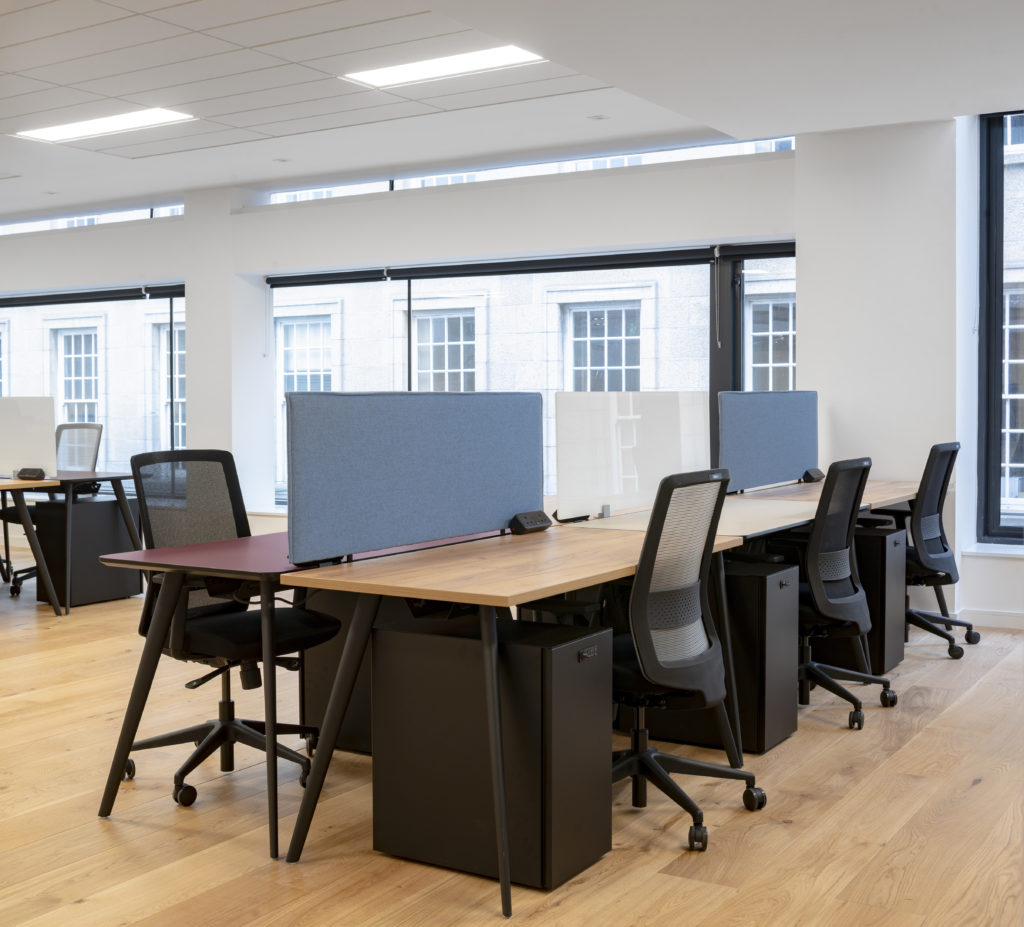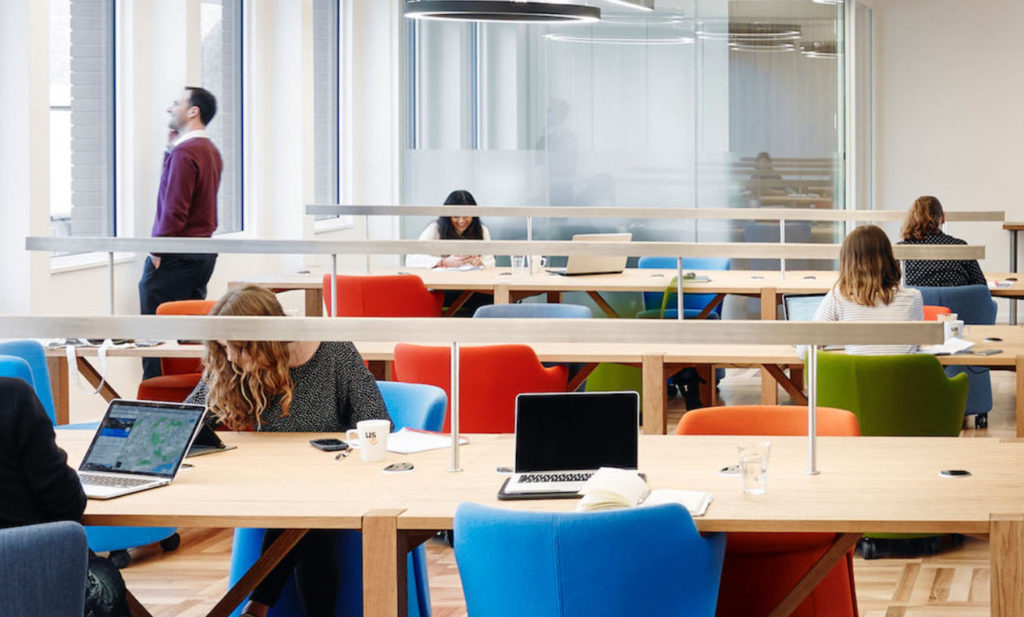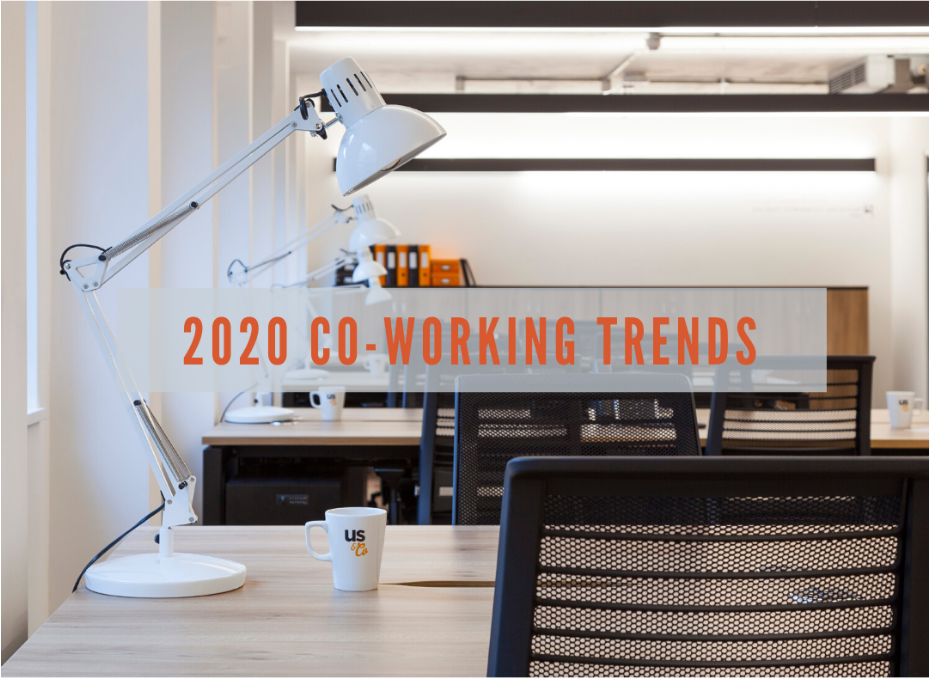
The last ten years have been staggering for the phenomenon of co-working. Back in 2010, only 21,000 people around the world could be classed as ‘co-workers’. Now, it is estimated that there will be 5.1 million co-workers by 2022.
With the new year (and a new decade!) just around the corner, we thought now would be the perfect time to look ahead to how this industry looks set to shape-up in 2020. As more and more brands turn to flexible office space, staying ahead of the co-working trends is becoming increasingly essential for staying ahead of your competition.
This article has been written by Us&Co, professional co-working space provider based in London Monument, Dublin and Stratford. For more information on our facilities and services, click here.
1. The growth of serviced, fully private offices
There was a time when co-working was mainly for freelancers, hot-deskers and short-term office rentals. While the practice is still obviously great for such workers, it also looks as though an increasing number of other players are entering the co-working game.
One of the primary benefits of co-working is that it takes all the stress and hassle of office management away so you can concentrate on growing your business instead. The ease of not dealing with cleaning, intermittent Internet and stocking the coffee machine with beans is now appealing to small teams and larger companies alike.
As a result, more established and flourishing brands are opting for serviced private offices. These provide all the privacy, customisation and space that you need, alongside the flexibility and time-saving inclusions that characterise co-working memberships.
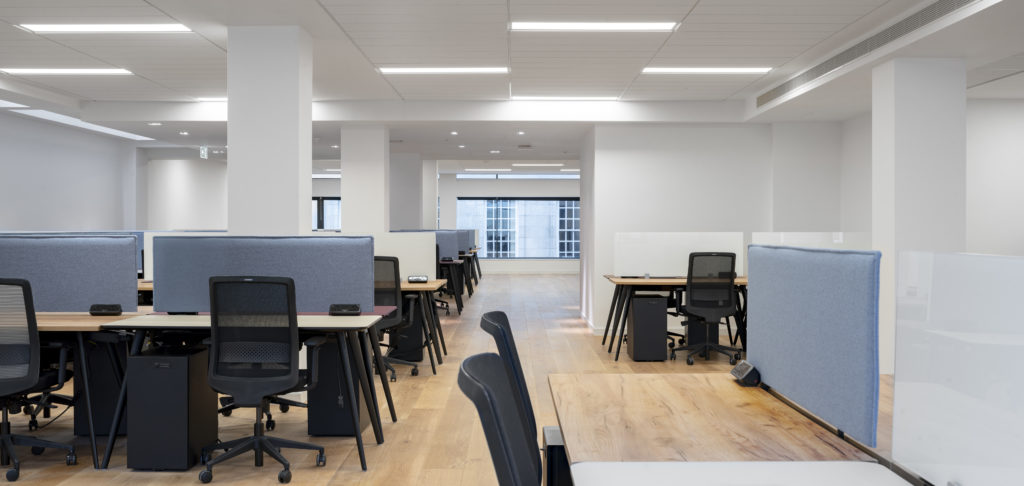
An example of a fully serviced private office from Us&Co, ideal for larger teams looking for a space they can really make their own.
2. The external meeting trend
Bookable meeting rooms are becoming increasingly popular, with 2020 set to see the highest number yet of meetings arranged at external locations. A report by Meetings Booker found that a growing number of businesses are booking externally particularly for full-day meetings, which make up 49% of room booking requests.
It’s not hard to see why. There is a long list of advantages to booking external meetings, and scenarios where it is advisable to do so. For example, many brands who book one of our Us&Co meeting rooms do so for a change in scenery for breakout workshops, because they don’t have the meeting space of their own or to take advantage of amenities like audio-visual technology or whiteboards.
External meeting rooms provide high-tech, serviced spaces where any business can host and impress partners, clients, investors and prospective employees. The variety promised by these spaces offers businesses the flexibility of duration, group size and even seated or stand-up meetings.
As specialists in productivity-focused office design, you can be sure to expect a high standard of meeting rooms from co-working spaces.
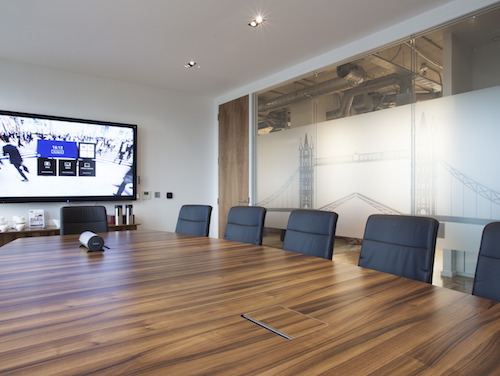
3. The increasing variety of co-working providers
When co-working was a relatively new phenomenon, there wasn’t a huge variety in what you could expect. Obvious big, early players like WeWork dominated the industry, stamping their particular style onto the practice. That’s all well and good, but it is becoming abundantly clear that a one-size-fits-all never works when it comes to workplace productivity.
In recent years, co-working has seen a significant increase in diversity. Some offer specialist spaces focusing on co-working for a specific industry. Others prioritise catering for certain sizes of teams, for example, spaces designed primarily for freelancers or small groups of under 5. Then there are some that pride themselves on providing a female-centric atmosphere.
Here at Us&Co, we’ve gone down the route of Pro-Working. We prioritise professionalism, productivity and flexibility to provide our members with truly high-quality working experience.
4. The growth of co-working in new locations
Co-working is no longer confined to London, New York and other large metropolitan power-houses. In 2019, the number of co-working spaces registered outside of the UK and USA climbed. India, Spain and Germany, for example, have 841, 483 and 311 co-working spaces registered.
Within the UK, you can expect to find co-working centres cropping up in the vast majority of cities and large towns. London, of course, continues to be the co-working capital of the country (if not, Europe too). However, co-workers no longer have to look to central, ‘conventional’ co-working locations, like Bank & Liverpool Street. Co-working business centres are emerging in previously untapped areas, such as Stratford, which continues to reap the benefits of the 2012 Olympics.
Another significant up-and-comer in the world of co-working is Dublin. Especially amidst the uncertainty of Brexit, many brands are turning to the Irish city for bases within the EU. It offers a high quality of life and a gateway to world markets that appeals to SMEs and established businesses alike. In line with this increase in Dublin business potential, the Dublin flexible workspace industry grew by 4,500 new desk spaces within 2019 (according to research by Click Offices), with further growth predicted for 2020.
Interested in co-working?
Interested in seeing how co-working could help your business thrive in 2020? Us&Co have dedicated pro-working centres in London Monument and Dublin, as well as our brand new workspace in Stratford, opening in the new year. Come look around our centres by booking a tour here.
Get in touch with the Us&Co team today:
London Monument co-working space, 7 Harp Lane
Phone us: 02030313535
London Stratford co-working space, 11 Burford Road (opening early 2020)
Phone us: 020 3031 3535
Dublin St. Stephen’s Green co-working space, 5 School House Lane East
Phone us: +353 (1) 529 4100
Us&Co is very excited to announce that our third workspace – 11 Burford Road, Stratford, London – has opened its doors this New Year!
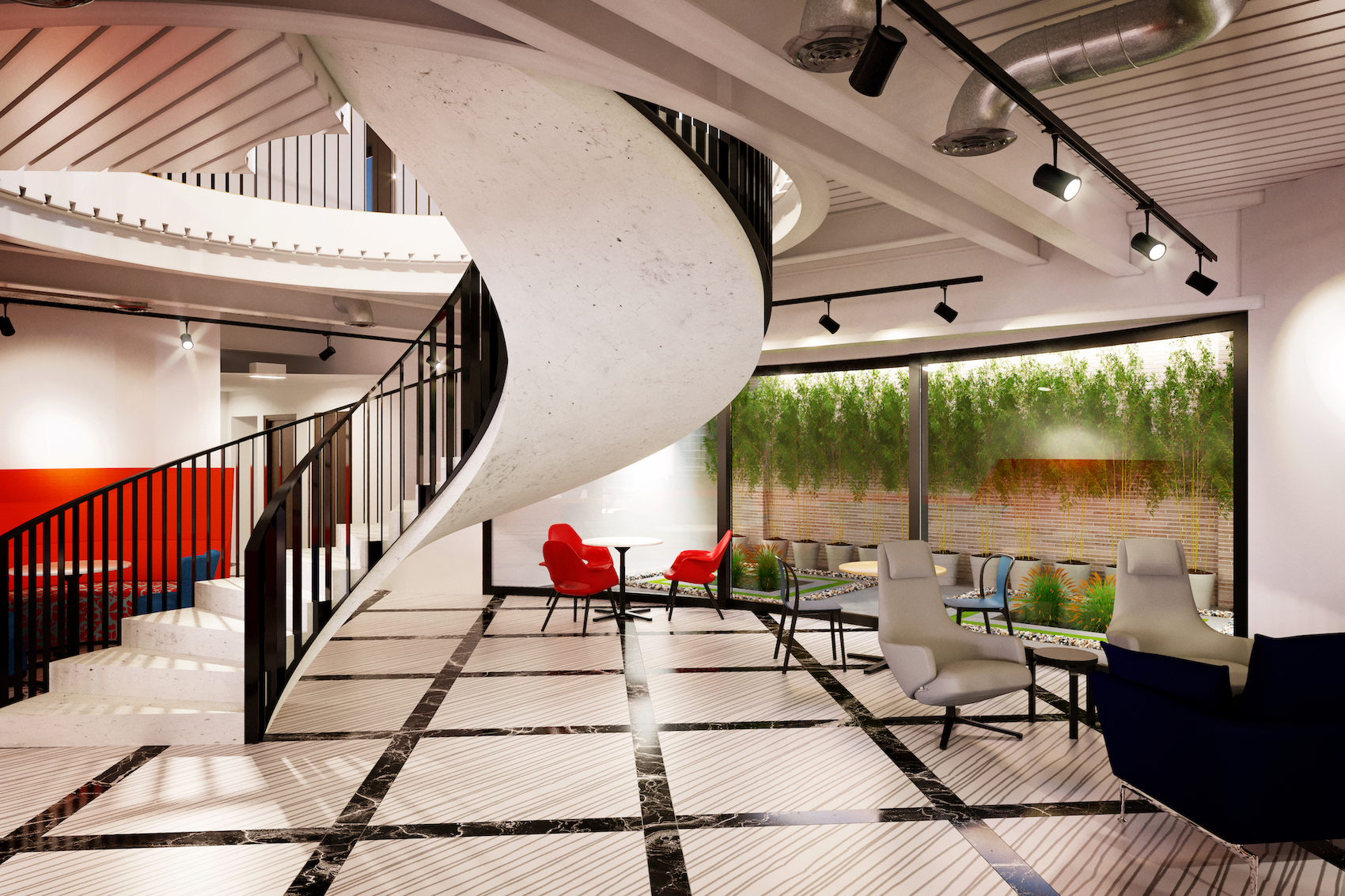
Us&Co Stratford is our largest business centre yet and follows in the footsteps of our London Monument and Dublin coworking spaces. The building consists of 6 floors and over 30,000 sq. ft of private office space. There are also modern, high-tech meeting rooms, a host of premium amenities and stunning breakout spaces for both relaxing and hosting events.
The new East London space mirrors the professional aesthetics of our other centres, including the abundance of natural light and chic decor that Us&Co has always prioritised.
We are excited to be taking shared workspace in Stratford to the next level, providing forward-thinking businesses with office space in one of the most rapidly-growing areas of London.
What does the new space have to offer?
Us&Co Stratford provides the same high quality of amenities and facilities that our current members have come to associate with us. From the luxury decor to the all-inclusive membership fees, we bake professionalism, flexibility and transparency into the core of everything we do.
As always, Us&Co’s co-working cohort has access to free super fast WiFi, 24/7 building access, high tech meeting rooms (also available for external bookings), member events and secure bike storage.
Hot desk and fixed desk coworking is still a large part of what we can offer for our new Stratford members. However, because the building has so much available space, we are able to offer private offices for much larger groups, including large self-contained floors for whole teams.
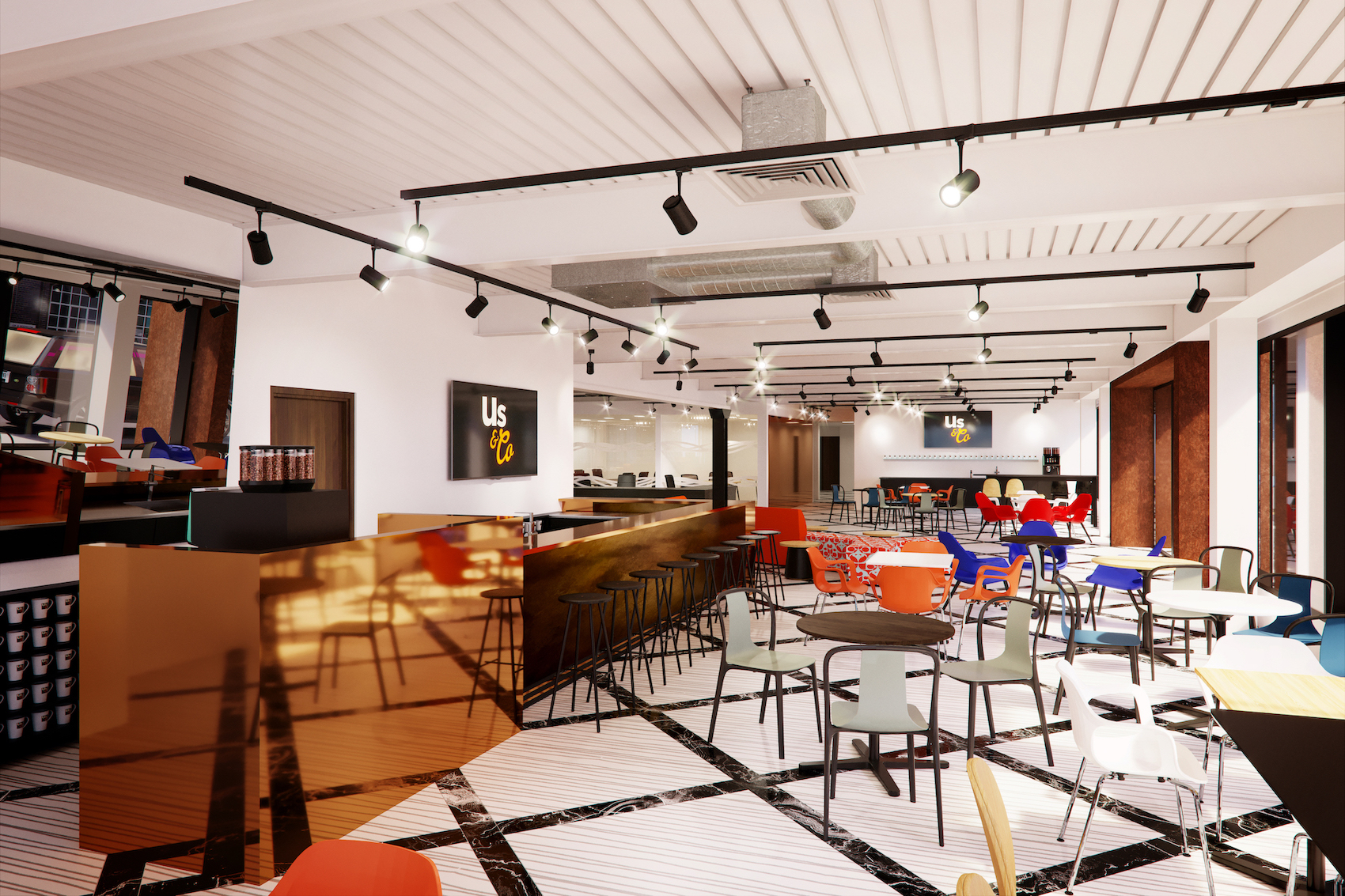
Customisable Private Office Space
Our new Stratford office space offers highly customisable working environments to suit any thriving, productivity-focused brand. We pride ourselves on creating a professional and nurturing atmosphere that brands feel comfortable making their own.
Ultimately, we want you to feel as though your workspace reflects who you as a brand. No two businesses are the same, and your office shouldn’t be either. Whether you need a private office for a smaller team or a whole self-contained floor for a larger brand, Us&Co Stratford is designed to be as adaptable to your requirements as possible. For example, we can arrange desks, partition walls and set out breakout areas exactly according to your preferences.
If you want to find out more about this, we have a full downloadable Us&Co Stratford Location Brochure. This brochure demonstrates potential floorplans – as well as including further information, such as pricing. You can also book a tour to get a feel of the space and we can help you work out what layout would suit your company best.
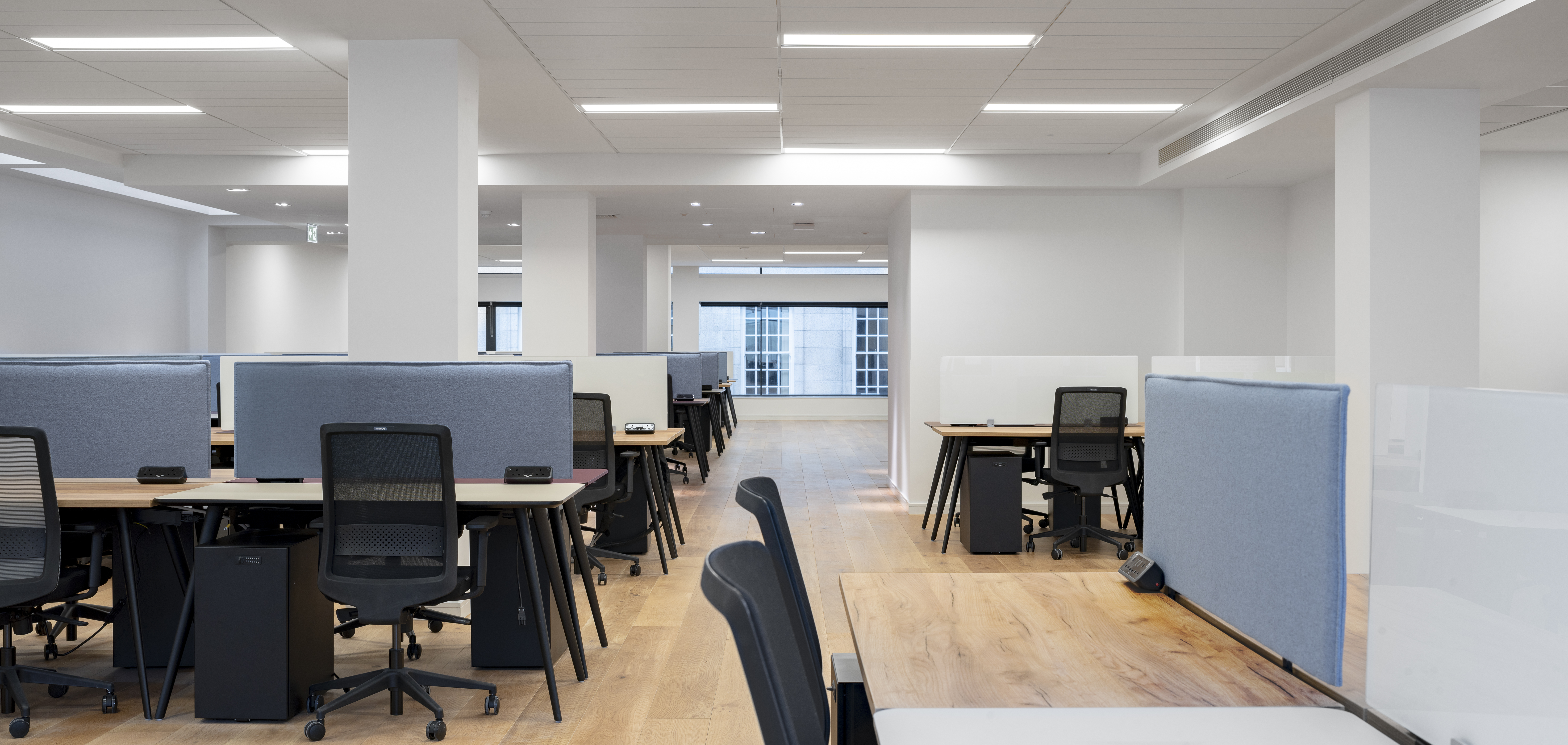
Where is Us&Co Stratford located?
11 Burford Rd, E15 2ST
Us&Co Stratford is ideally located for brands looking for a base in a well-connected, vibrant and professional area. We have carefully selected this location based on its clear and increasing potential, which has been growing from strength to strength ever since the area played host to the London 2012 Olympic Games.
Situated just a few minutes’ walk from Stratford underground, rail and DLR stations, there are super-fast, reliable links to the City, London City Airport, Eurostar and more. Additionally, the exciting development of the Elizabeth Line will improve Stratford’s connection to both central London and key commuter towns in Essex and London. Thanks to the new train line (currently estimated to be open by late 2020), it will take only 7 minutes from Stratford to Liverpool Street and 18 minutes to Paddington.
Our new East London workspace is also just 8 minutes walk away from Westfield Shopping Centre. One of the largest urban shopping centres in Europe, the centre offers restaurants, bars, entertainment and – of course – shopping facilities. To date, Westfield has generated retail sales of more than £7.4 billion, so it’s safe to say there is clearly commercial value in Stratford.
Were you to choose Stratford for your office space, you would be joining the ranks of a number of global heavy-weight brand that have already set up bases in the area. For example, Transport for London, Cancer Research, the Financial Conduct Authority and Unicef all moved to Stratford in recent years.
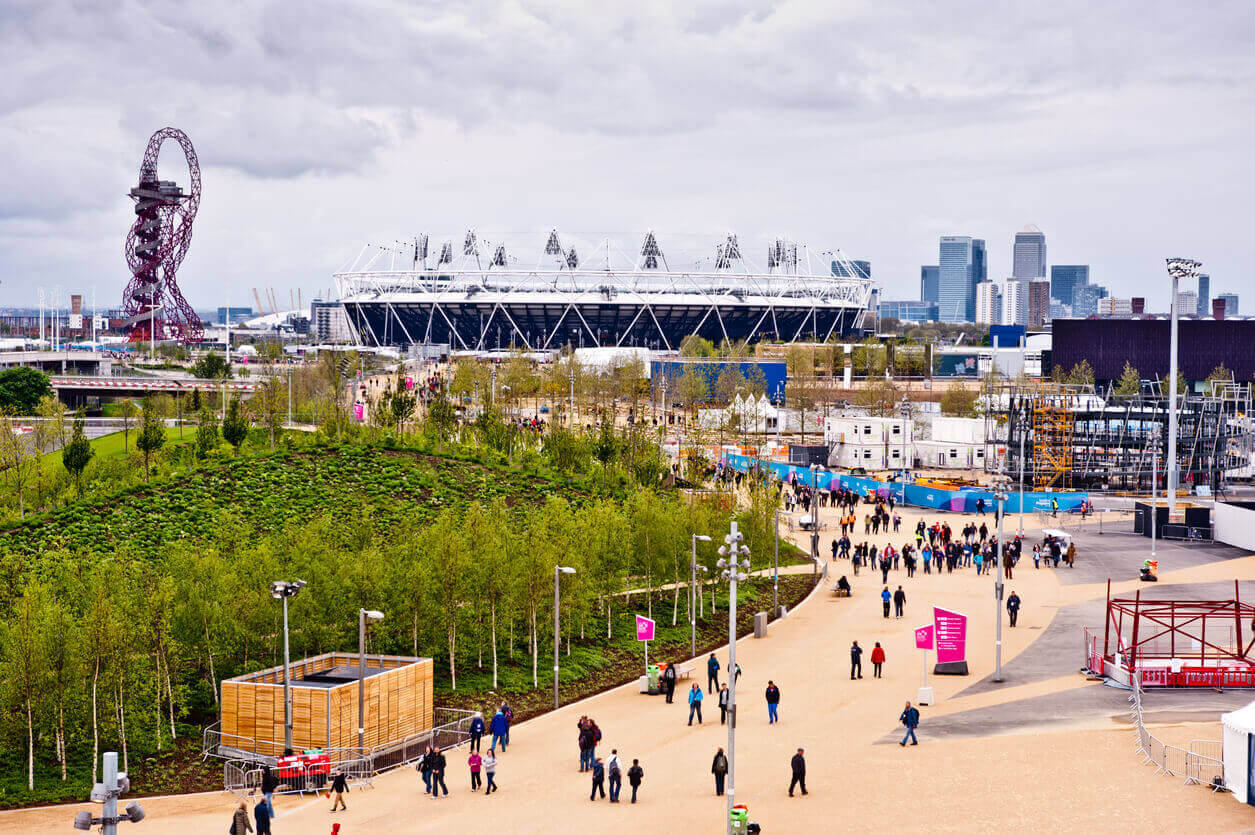
Get in touch today!
If you are interested in learning more about what the space has to offer, and how we can help support the growth and productivity of your brand, don’t hesitate to contact us.

In the last four years, the number of people working from co-working spaces has increased phenomenally. As recently as 2015, just over half a million people around the world opted for co-working. In 2018, that number exceeded 1.6 million.
A similar trend is evident when looking at the increasing number of people working from home. It is estimated that – in the UK alone – the number of people remote working has increased by over 200,000 since 2012, to a staggering 4 million.
Both practices offer flexibility and a respite from conventional, desk-chained office working. But how do you work out which is best for you? In this article, we run through some of the most lucrative benefits of co-working and why the set-up is so appealing to workers around the world.
Interested in trying out co-working yourself? Get in touch with the Us&Co team to discuss membership at our London Monument or Dublin workspaces.
1. Co-working centres are designed with productivity in mind
From the spacing of desks to the selection of furniture, a lot of thought and planning goes into the layout of a co-working space. Panels on the side of desks ensure that every individual worker can work on confidential projects without being overlooked. Break-out spaces are also typically kept very separate to working stations, with dedicated areas or rooms for breaks and lunches. This means that the coffee-break chatter doesn’t distract fellow co-workers who are sat at their desks.
One of the major downsides of working from home is that you end up working in an environment cluttered with personalised distractions. It is so much more difficult to concentrate when your TV, games and social media are all so readily available. There is no-one else around to hold you accountable for lapses in productivity.
Co-working eliminates that. Business centres like Us&Co are designed, decorated and furnished in-line with the latest theories in occupational psychology. Everything from desk layout and chair selection to breakout spaces and the flow of natural light has been carefully considered to help you get the most out of your working day.
Read more:
– Why Natural Light Improves Productivity
– Why Co-Working doesn’t mean reduced working privacy
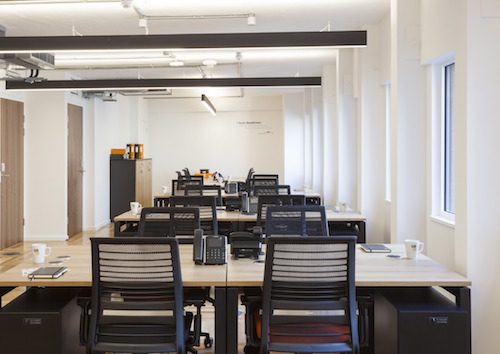
2. Schedule and routine
Overcoming the temptation to oversleep or procrastinate when you don’t have established work hours can take a substantial amount of self-discipline. Who’s going to notice if you sleep late into the morning and don’t begin working until lunchtime?
At the other end of the day, a common working-from-home trap is to continue working late into the evening. Long, laborious days are highly likely to decrease your attention span and productivity. Worse still, a study conducted by University College London found that working 55 hours or more a week increases the chances of suffering a stroke by over 30% compared to those who work the regular 40 hours or less.
Co-working, whilst still vastly more flexible that the conventional office set-up, makes it much easier to stick to a routine than working from home. You have more accountability from your fellow co-workers, not to mention somewhere to physically disconnect from the temptation of afternoon naps.
Read more:
– Are you taking breaks all wrong?
3. Socialising and networking
Human beings are natural socialisers. Our brains are hard-wired for interaction with other people, releasing dopamine as the direct consequence of socialising.
Co-working far exceeds working from home when it comes to providing social opportunities. Workspaces like Us&Co know it’s important to prioritise both work and play, offering members events, breakfasts, after-work drinks and more. Co-working fosters a community that a home-worker simply wouldn’t be able to replicate.
Working-from-home induced isolation can be dangerous for a number of reasons. Firstly, from a mental health perspective, loneliness can go on to trigger depression or anxiety. Secondly, isolation from your colleges can actively damage your career progression prospects. Sadly, studies show that in many cases ‘out of sight = out of mind’.
4. Professional Meeting Locations
A significant proportion of people who work from home perform some sort of client-facing role – for example, freelance consultancy, sales or media. As such, they quite often have to meet with clients, leads, partners and investors – which is quite difficult when your only available meeting space is around the kitchen table!
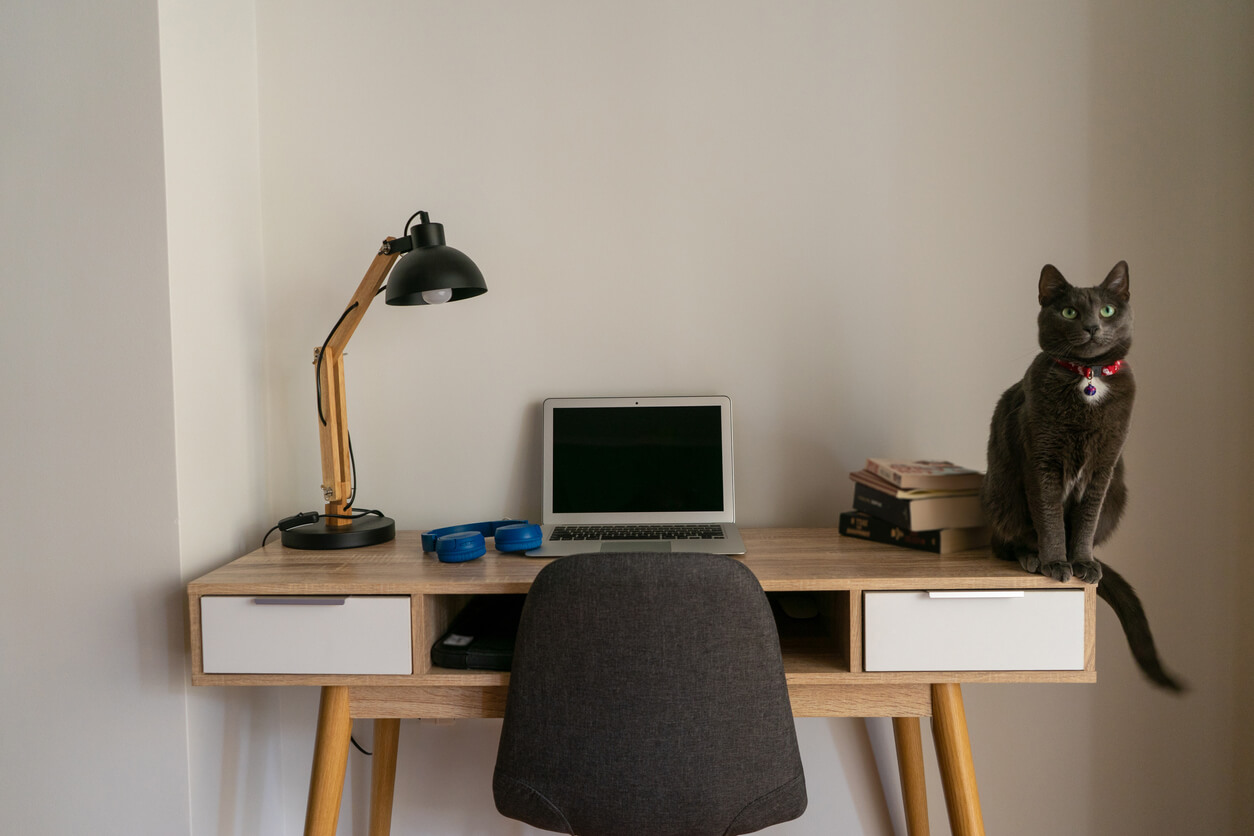
Co-working spaces offer a notable advantage over this, in that they provide a professional location to host and impress. This is true for a number of reasons:
First of all, co-working buildings themselves tend to be decorated, furnished and laid out in a highly sophisticated manner, that is always going to provide a positive first impression of your brand.
Secondly, there’s the option to book high-tech meeting rooms, equipped with sound-proofing, conference call capabilities, ergonomic chairs and whiteboards – facilities that the average home is unlikely to have.
Even if working from home is your chosen option, using co-working spaces to book external meeting rooms is always a good way to present yourself professionally.
Interested in co-working?
Us&Co offer professional co-working (hot desks, fixed desks, private offices, meeting rooms and event venue hire) in London and Dublin. We pride ourselves on creating a working atmosphere in which growing businesses, SMEs and individuals can thrive and grow.
Get in touch with the Us&Co team today:
London Monument co-working space, 7 Harp Lane
Phone us: 02030313535
Dublin St. Stephen’s Green co-working space, 5 School House Lane East
Phone us: +353 (1) 529 4100
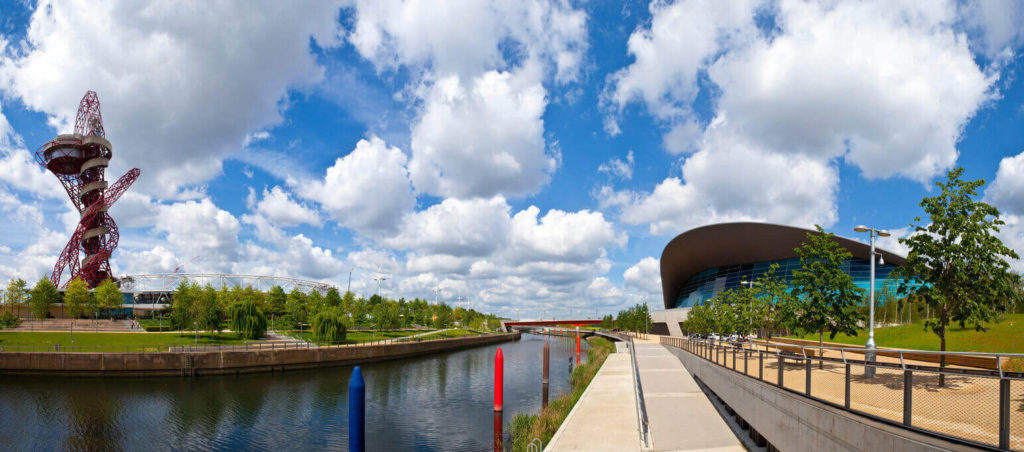
Back in 2005, the International Olympic Committee announced that London was to host the 2012 Summer Olympic and Paralympic Games, for the first time in over 60 years. The UK capital was determined to put on a show, especially considering how much of a tough act Beijing 2008 was always going to be to follow.
Plans were soon drawn up for the Queen Elizabeth Olympic Park, a complex sporting venue in Stratford. Following a period of severe economic decline in the latter half of the 20th century, the London East End district of Stratford seemed to some like an odd choice to host such a sporting spectacle.
Fast forward almost 15 years (and over £9 billion) and any initial concerns have been well-and-truly quashed. The London Olympics were a phenomenal success and Stratford achieved a new lease of life as a thriving centre of tourism, retail and business.
In this article, we explore the Olympic story of Stratford’s past, present and future in the wake of London 2012. In particular, we will look at the growing opportunities for businesses in the area and why so many companies are looking to East London.
What was Stratford like before the Olympics?
The second half of the 20th century was not kind to Stratford. De-industrialisation led to the loss of tens of thousands of jobs for Stratford inhabitants, thanks in no small part to the closure of the London Docks in the 1960s.
A particularly iconic symbol of Stratford’s industrially unloved reputation was the so-called ‘Fridge Mountain’. The 20-foot tall collection of discarded white goods on the riverbank was thought to be the biggest of its kind in Europe!
The construction of the Stratford Olympic Park itself was a colossal undertaking. It took 46,000 workers to construct the Olympic Stadium and grounds, which had a total capacity of 80,000. Renovation even included the removal of 2,000 newts from the Olympic Park building site – along with 4 human skeletons, dating back 3000 years to the Iron Age!
The promise of Olympic prosperity was therefore a very exciting one for Stratford. The project set the stage for over 46,000 new jobs in the district, a 30% increase in rail capacity through Stratford station and over 20,000 new homes. There were also plans for three new secondary schools, 23 new GP clinics and – unsurprisingly – world-class sports and leisure facilities.
And yes, clearing ‘Fridge Mountain’ was one of the first things ticked off Stratford’s to-do list.
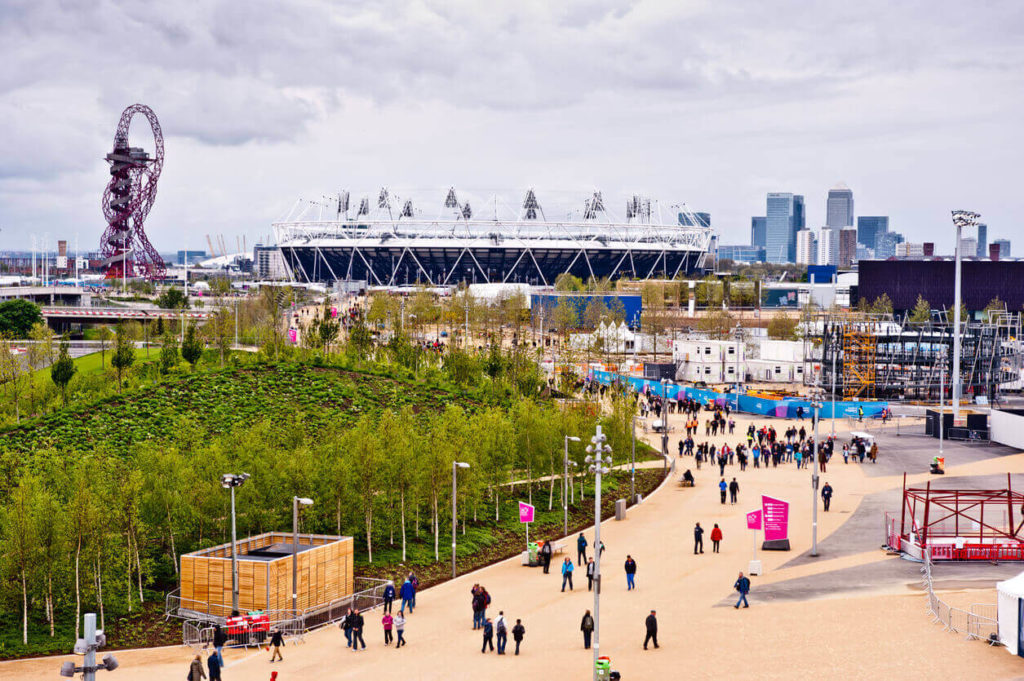
What was Stratford like during the Olympics?
Stratford was home to the athletes’ Olympic Village and several key sporting venues: the London Stadium, London Aquatics Centre and the Lee Valley VeloPark.The ArcelorMittal Orbit was constructed to overlook the Queen Elizabeth Olympic Park, an observation tower and Britain’s largest piece of public art.
During the Games fortnight, it is estimated that as many as 370,000 visitors came to the Olympic Park every single day. 10,500 athletes from 204 nations participated across 26 sports, supported by 70,000 volunteers or ‘Games Makers’. At peak hours, over 200 trains travelled into Stratford Regional Station.
What is Stratford like now?
7 years on from the Games, post-Olympic Stratford is nearly unrecognisable compared to Stratford at the turn of the millennium.
The Queen Elizabeth Park has been transformed into a bustling hub and great destination for tourists looking to explore the legacy of the London Olympics. The area’s population sits healthily at 51,000 and Stratford Train Station is now the 6th busiest station in Britain.
The Westfield Stratford City Shopping Centre, which opened in 2011, is one of the largest urban shopping centres in Europe. Westfield attracts 50 million yearly visitors and has so-far generated retail sales of more than £7.4 billion.
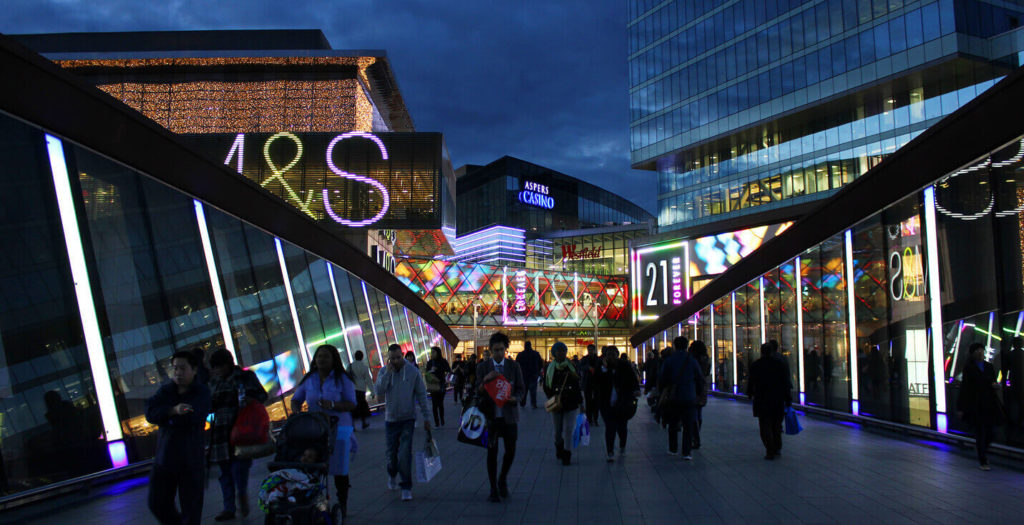
Outside of retail, there is also a thriving network of global heavy-weight companies setting up Stratford bases. Transport for London, Cancer Research, the Financial Conduct Authority, Unicef and the British Council all have a sizeable presence in the area.
Higher education establishments like Loughborough University and University College London have invested heavily in Stratford campuses. As a result, there is a rich pool of potential talent ready to be utilised by established brands and start-ups/SMEs alike.
In a word, the Stratford business scene is thriving.
What does the future look like for Stratford?
Expectations for future growth in Stratford are extremely high.
One especially exciting area of development is the upcoming Elizabeth Line/Crossrail, which will extend as far as Reading in the West and Shenfield in the East. This will enhance Stratford’s connection to both central London and key commuter towns in Berkshire and Essex.
The Elizabeth Line will reduce direct journeys from/to Stratford Station to:
- Liverpool Street – 7 minutes
- Canary Wharf – 8 minutes
- Tottenham Court Road – 13 minutes
- Bond Street – 15 minutes
- Paddington – 18 minutes
- Heathrow Central – 44 minutes
- Reading Station – 68 minutes
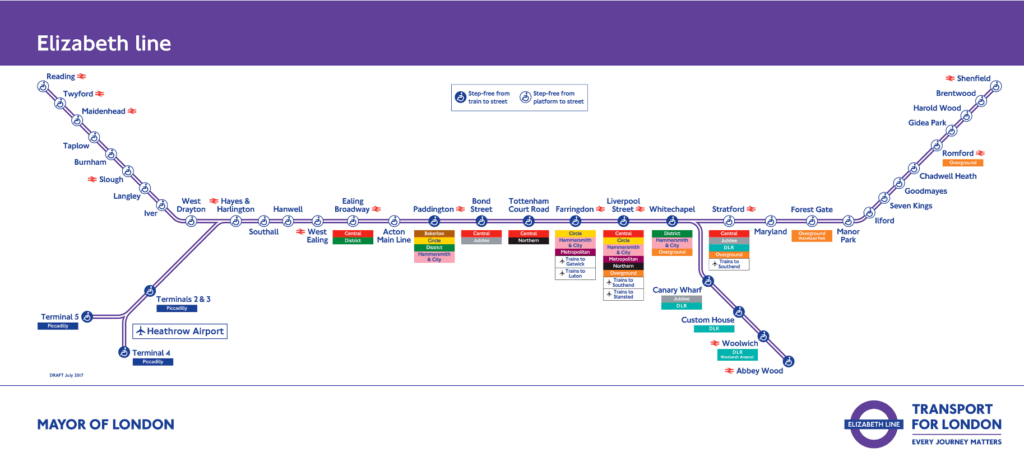
Considering that Stratford is already conveniently placed for London City Airport and is well-connected via the DLR, this makes the area arguably the most ideal commuter hotspot in London – at least outside of Zone 1.
Development in Stratford did not simply stop once the Olympics were finished. A £2.4 billion cluster of office blocks is currently underway close to the train station. The 11 towers being constructed will end up constituting a business site approximately the same size as Canary Wharf. This is enough office space for over 25,000 workers.
Brands of all shapes and sizes, industries and markets are consequently flocking to Stratford. The area offers central London connectivity, beautiful green space and a dynamic business landscape that is set to only keep growing from strength-to-strength.
Announcing: Us&Co’s Brand New Stratford Co-Working Space
Us&Co is incredibly proud to announce that we are going to be opening our third serviced workspace in Stratford in early 2020. This new professional, shared workspace will be just a few minutes walk from the train station – perfect for freelancers, start-ups and established brands alike to make the most of everything Stratford has to offer. It will have 6 floors and over 30,000 sq. ft. of private offices, co-working hot desks, meeting rooms and modern training rooms. Register your interest now for fantastic early bird discounts.
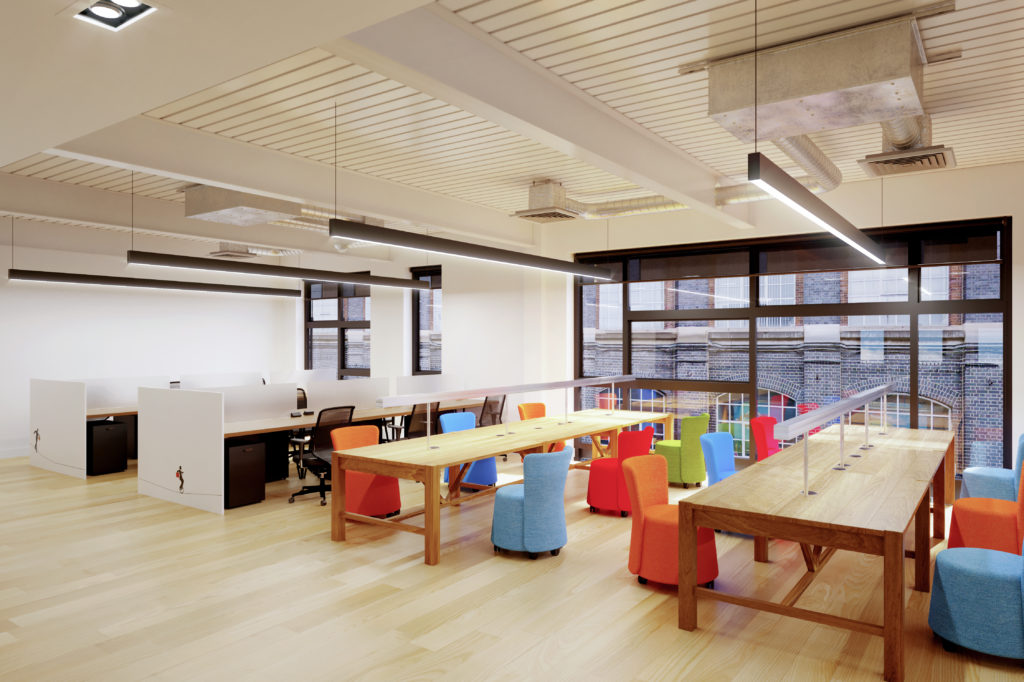
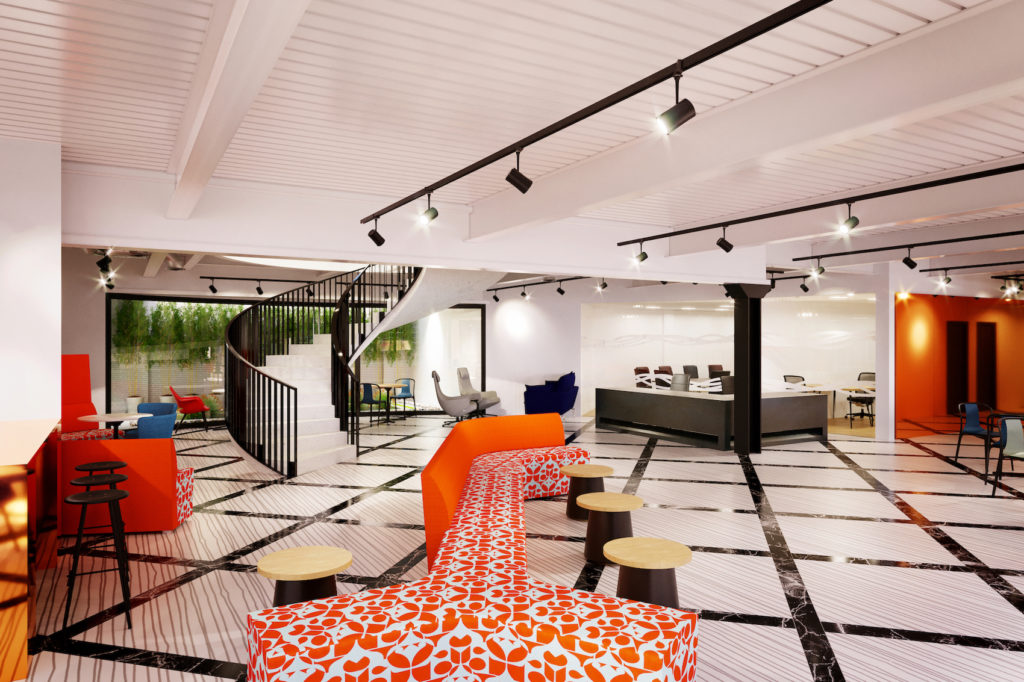
Stand-up meetings are an increasingly popular trend in offices and workspaces around the world, involving discussions held by standing participants around (usually raised) tables.
There are a number of benefits to this practice, which this article will explain. However, it is important to do stand-up meetings right in order to get the most out of them.
So, starting at the start…
What Are The Advantages Of Stand-Up Meetings?
1. The health benefits of standing meetings
It is hopefully no surprise that remaining seated for extended periods of time is highly problematic for your general health.
Spending too high a proportion of your working day sat down increases your chances of heart disease, diabetes, high blood pressure and even dementia. Office-chair-potatoes also face a high risk of suffering from Deep Vein Thrombosis, a clot that forms in your leg, often the result of sitting still for too long.
And then there are the problems of posture. Days spent almost entirely at your desk or seated around a meeting table are a dangerous recipe for slumping, inevitably leading to back issues. So widespread is this, in fact, that a survey of 250 doctors ranked musculoskeletal disorders as the most common type of work-related illness.
Stand-up meetings therefore offer a well-needed respite from sitting. They allow you to stretch your legs, recharge your batteries and get your blood flowing.

2. Standing meetings are much more efficient and short
Standing meetings are a phenomenally effective way of ensuring that meetings stay short and on topic. The reason for this is because of the comparative discomfort of standing for long periods over sitting. When you are sat comfortably, it is much easier to waste time with drifting conversation. In fact, the efficiency of standing meetings is so great that studies show they last, on average, 34% less time than seated meetings.
So, if you find your meetings drifting off topic or going round in circles, getting up on your feet may be the answer.
3. Stand-up meetings encourage productivity & dynamism
Standing up during a meeting boosts the attention span and ability to provide a creative, productive contribution.
Researchers from Washington University performed a study on this phenomenon. They asked volunteers to take 30 minutes to plan a short university recruitment video. Some volunteers worked in rooms with chairs arranged around a table and some with no chairs at all.
The researchers found that volunteers who were standing during the session were more likely to share their ideas. Through recordings from sensors worn on participants wrists, the study also found that the standing volunteers were more physiologically excited during the process.
How To Run A Productive Stand-Up Meeting
Many of these benefits of a stand-up meeting are only actually advantageous if you do them right. To help you ensure that you do this, we have therefore outlined our top tips for running a productive stand-up meeting:
1. Keep it short
An hour-long stand-up meeting defeats the whole point. Not only does it mean that you’ve failed to leverage the main benefit of stand-up meetings (the way they encourage concise, productive conversations), but you’ve likely lost the attention of your participants. Whose mind wouldn’t wander after 45 minutes + on their feet? Aiming for approximately 20 minutes is ideal to get the most out of a standing meeting.
2. Prioritise discussion over dictation
Seeing as stand-up meetings encourage creativity, interaction and collaboration, don’t squander that by spending the entire duration reading off of PowerPoint slides. Instead, brainstorm, swap ideas and receive input from the whole team. Stand-up meetings are much more dynamic than seated ones… don’t waste that!
3. Keep moving
One of the problems some people have with stand-up meetings is that they struggle with cramp or fatigue. However, those problems are much more likely to affect those that spend the entire time stood perfectly still. Even just a slight bit of movement helps improve circulation and prevent cramp. Wander around a little bit during the meeting. Swap who is writing on the whiteboard. Have a dedicated ‘speaker space’. Just don’t be a statue.
Booking Stand-Up Meetings Through Us&Co
Interested in hosting a stand-up meeting but without the ideal space to do so? Why not book a meeting room at one of Us&Co’s London or Dublin workspaces, complete with elevated tables that are perfect for standing meeting participants.

What Is Co-Working?
Co-working is the flexible working style that has recently become a hugely popular choice for millions around the world. Essentially, it is the practice of working in a shared business centre alongside members from different companies and industries.
There is no one-size-fits-all way of co-working, with the majority of co-working spaces offering a variety of memberships.
Some business centres, like Us&Co, offer what’s known as a ‘Pro-working’ experience, which includes all the core benefits of co-working, but on a more professional level. Click the following link to read our article on the differences between co-working and pro-working.
Different Kinds of Co-Working Memberships Include:
-
Hot-desking
Hot-desking is when you move where you work within a business centre on a day-to-day basis. This kind of working keeps you flexible. Studies show that the variety helps ensure a refreshed mindset that is particularly useful for creativity.
-
Fixed desks/dedicated desks
Fixed desk memberships offer you a dedicated desk to make your own. Ideal for either one-man-bands who prefer consistency and routine, or teams of workers who want to ensure they remain seated together.
-
Private office
Private offices offer all the benefits of co-working for larger teams of workers. Still situated within collaborative business centres, but often on your own dedicated floor or with barriers to provide more privacy.

Owing to the flexible nature of co-working, the practice appeals to a wide variety of workers and industries, both big and small. Co-working is a growing favourite among flourishing businesses, SMEs, freelancers, the self-employed, start-ups, travelling employees and big brands alike.
This article looks at all the statistics and facts surrounding the co-working boom, from the most popular co-working locations to the industries that co-workers typically come from. We also address the advantages of co-working, and why you should consider it for your up-and-coming business.
Interested in learning more about how co-working could help your company thrive? Contact Us&Co today to find out about co-working memberships at our London Monument and central Dublin workspaces.
The growth of co-working – how many people co-work around the world?
The co-working timeline is an interesting one, with the practice being a relatively recent phenomenon. At the beginning of the decade, just 21,000 people around the world were co-working. In staggering contrast to that, 2018 saw 1,690,000 people signed up to co-working memberships.
A lot of this growth has occurred in the last couple of years. The number of global co-workers has more than doubled since 2016, and this growth is projected to continue. It is estimated that, by 2022, there will be 5.1 million co-workers in the world, with over 1 million in the USA alone.
The graph below, with information compiled from statista.com, shows the growth in the number of people co-working around the world over the last 8 years.

What Are The Most Popular Co-Working Locations?
It is estimated that there are currently almost 15,000 co-working spaces around the world, as of the beginning of 2019. In the US, this equates to 2.5 million square metres. In London, arguably the co-working capital of the world, 994,000 square metres are dedicated to co-working.
Global cities, in particular, are thriving hubs within the co-working industry.
In London, New York and Chicago, shared workspaces are expanding at a staggering annual rate of 20%. Co-working giant WeWork has such a substantial foot-hold in New York that it is actually on track to become the largest private office tenant in Manhattan!
Outside of the USA and UK, co-working is also a growing phenomenon in India, Spain and Germany, with 841, 483 and 311 co-working spaces registered in those countries respectively.
Ireland is also seeing a noticeable co-working boom. According to research by Click Offices, it is expected that the Dublin flexible workspace industry will grow by 4,500 new desk spaces within 2019.
What Are The Most Popular Co-Working Industries?
Co-working sees people come from all walks of life and a vast variety of industries. However, some of the most popular industries that co-workers work in are:
- IT – Information technology is the main dominating industry, taking up an estimated 22% of flexible desk spaces.
- PR, Marketing & Sales – The second biggest proportion of co-workers come from these industries – increasing every year. Between 2016 and 2017, this group grew its co-working market share from 8% to 14%.
- Consultancy – Consultancy has been a core part of co-working since the trend emerged, although it is decreasing in significance (down to 6% of co-workers, compared to 11% in 2016).
Demographics – Who Is The Typical Co-Worker?
While there is no particular ‘typical co-worker’, it is interesting to look at how co-working demographics breakdown.
Recent studies show that the current average age of coworking space members is over 36 years old. When looking at the age group with the highest number of members the dominant age segment is 25 to 29 years old.
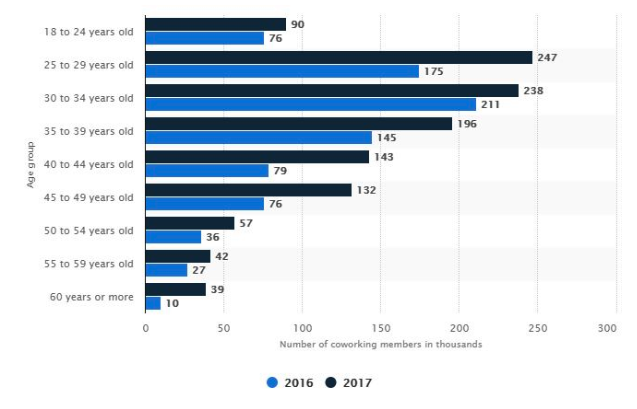
Gender-wise, male co-workers were traditionally more common. However, that does look to be changing in recent years to the extent that – as of 2019 – approximately 40% of the members of working spaces are women.
More Individuals Or Teams?
According to a recent study, 41% of all co-working space members are freelancers, 36% are employees, 16% are employers, and 7% of members are engaged in other activities, for example, studying.
The proportion of co-workers that are freelance, however, has taken a turn in recent years. In 2012, freelancers made up 55% of all co-workers. This change is mostly due to the growing appeal of co-working for company teams, looking for an alternative to inflexible office rental contracts.
What Are The Benefits Of Co-Working?
There are countless reasons why co-working has become such a popular choice around the world. But, time and time again, we see the following benefits providing the deciding factors behind the leap into co-working:
- Flexibility to choose your own working atmosphere
- Collaboration and networking opportunities
- Affordable membership fees with no difficult contracts
- Designed with productivity in mind
- Provides a place to host and impress partners, employees and investors
For more information on the advantages of co-working, read our previous article on the hidden benefits of hot-desking.

Start Co-Working Today
If you are interested in checking out one of our exciting co-working spaces in London Monument or Dublin St Stephen’s Green, please get in touch with the Us&Co team today. Come look around our centres by booking a tour here. You can call us on 020 3031 3535 for Monument or +353 (1) 529 4100 for Dublin, or fill out our quick enquiry form on our Contact Us page.
Pro-Working: What Is It & Why Is It Better Than Co-Working?
The practice of ‘co-working’ is quickly becoming such a popular working set-up that it hardly needs an introduction. Its more sophisticated sibling ‘pro-working’ is perhaps a bit less understood, yet offers a plethora of fantastic advantages. In this article, we will outline a few of the major differences between the two and the reasons why pro-working could be beneficial to your business.
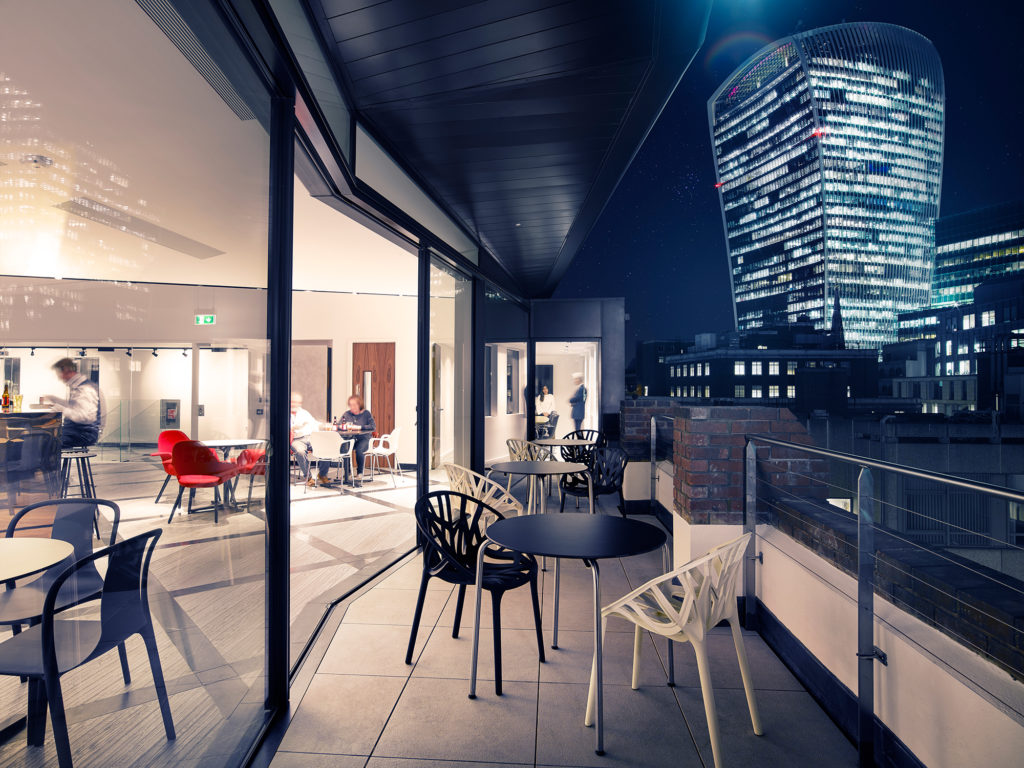
What Is Pro-Working?
Pro-working is a flexible way of working for business teams or individuals within a dedicated shared work space or business centre, akin to co-working. Like co-working, members have access to fixed desks, hot desks, meeting rooms and communal break spaces. However, pro-working is more professional and prioritises providing its members with quality, sophistication and partnership.
Think of the difference between co-working and pro-working as similar to that between a standard hotel and its five-star counterpart. Both offer core services, but the latter is simply a step-up in terms of professionalism.
What Are The Advantages Of Pro-Working Over Co-Working?
The professional focus of pro-working spaces offers the following advantages and benefits to its members:
1. Enhanced Facilities
2. Designed To Impress
3. On-Site Management
4. Set-up For Long Term Partnerships
We have provided further information on how each of these benefits manifest below.
1. Enhanced Facilities
Co-working provides the necessities required to ensure members can work productively and with flexibility. Pro-working goes one step further.
Of course, pro-working members still have access to desks, WiFi, ergonomic chairs, secure storage, bookable meeting rooms and casual break-out areas, like their co-working counterparts. However, pro-workers are then offered additional facilities that would not necessarily be available at all co-working spaces. These include showering facilities, bike racks, high-tech ‘plug-in & play’ meeting rooms, catering facilities and high-speed internet.
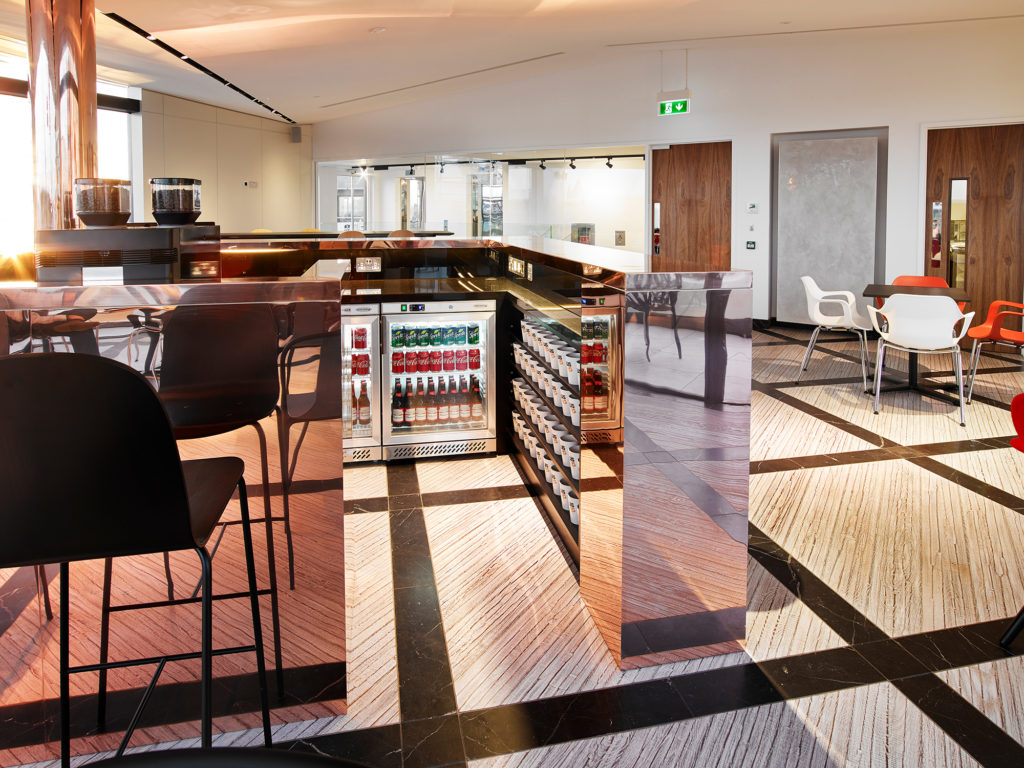
For example, at Us&Co, we are especially proud of our Members Club Space that all our members get access to as a communal breakout area , and are also bookable as event venues by external users. With a stunning copper bar in the centre, stylish cafe-style seating and beautiful views of the surrounding areas, these event spaces provide professional and sophisticated networking venues.
2. Designed To Impress
Whether you’re a start-up company or a flourishing brand, every business needs to host and impress on occasion. Sometimes it’s investors, clients, partners or potential new team-members, but it is always crucial to set the right impression.
This is something you are much more likely to achieve with pro-working rather than co-working. Pro-working spaces are often designed with sleek and sophisticated decoration, high quality furniture and with a focus on productivity and professionalism.
What’s more, pro-working meeting rooms are often of excellent quality, providing much more than the bare-minimum simple table and chairs. You can impress your attendees with high-tech ‘plug-in & play’ presentation set-ups, whiteboards, lots of natural light and even sound-reducing devices for added privacy.
3. On-Site Management
Much like how 5-star hotels provide concierge service, a helpful reception desk and a team of behind-the-scenes cleaners, caterers and operations staff, you can expect a similar level of dedicated on-site service from pro-working centres.
Co-working centres are often quite autonomous, without the regular presence of the provider. By contrast, pro-working work spaces are likely to have team members on-site most days of the week.
Us&Co members and guests, for example, are greeted by our friendly receptionist. There are then always team-members on-hand for any questions or concerns. You will often find us enjoying the facilities ourselves, relaxing in the break-out spaces or working from a hot desk.
4. Set-up For Long Term Partnerships
Pro-working companies don’t just see their members as desks to be filled or names on a database, they really care about forming lasting partnerships and relationships with the people that come through their door.
Here at Us&Co, we are personally invested in the success of our members, and thrive on seeing businesses grow and flourish within our own walls. We therefore design our entire pro-working ethos around providing our members with the active support, facilities and partnership that will help brands achieve their goals.
Whether it’s networking assistance, introducing you to other members that we know will compliment your objectives, or simply checking in over Friday drinks, the pro-working approach allows us to feel as though we are part of your extended team. Your wins are our wins.
The pro-working set-up suits brands that are looking to impress, flourish and grow, and want more out of their day-to-day working environment than just a desk and a chair.
If you are interested in checking out one of our exciting pro-working spaces in London Monument or Dublin St Stephen’s Green, please get in touch with the Us&Co team today. You can call us on 020 3031 3535 for Monument or +353 (1) 529 4100 for Dublin, or fill out our quick enquiry form on our Contact Us page.
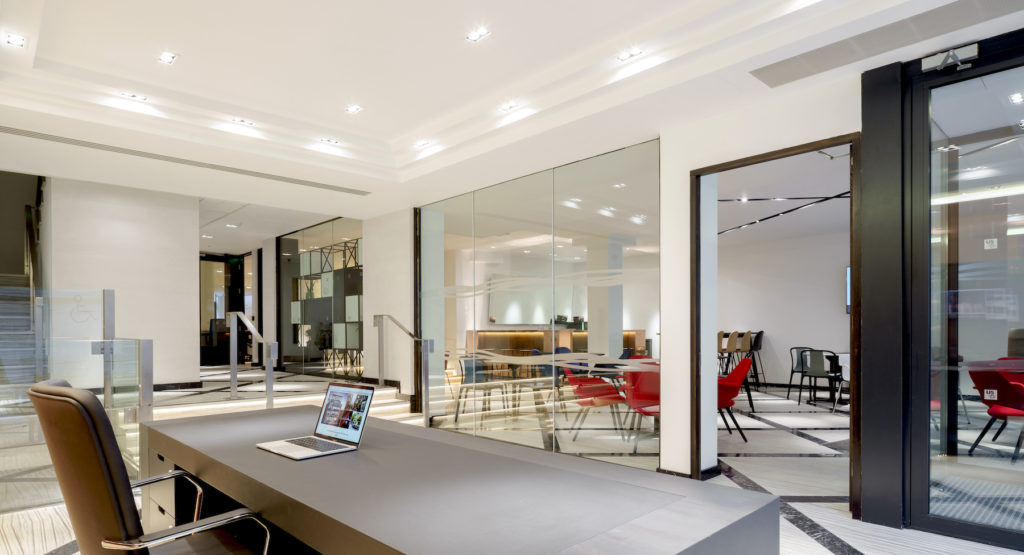
Us&Co Dublin reception area.
The Ultimate Guide For Start-Ups In Dublin
Download our FREE e-book discussing the Dublin start-up scene and our top tips for thriving as a start-up in the Irish capital, especially as more and more brands are moving there in the wake of Brexit uncertainty. Click the link below to download.
The Ultimate Guide For Startups In Dublin
A thriving, dynamic city with centuries of rich history and tradition, Dublin is a hugely popular choice for homeowners and businesses alike. It is home to some of the world’s most recognisable brands, with headquarters for Google, LinkedIn and Facebook. Especially considering the atmosphere of uncertainty surrounding Brexit, countless firms have looked to the Irish capital to replace London operations, out of need for securing a EU base.
However, it is not only the large brands that are giving in to the appeal of Dublin. Thanks to its established reputation as a thought leader in the worlds of finance, technology and innovation, start-ups and SMEs are also choosing to set up in Ireland. In 2017 alone, 22,354 new companies were registered in Ireland, a figure up by 6% on the previous year and that shows no sign of slowing down any time soon.
Here at Us & Co, we pride ourselves on creating a nurturing, highly professional working environment in which start-ups can flourish. Our clientele of co-workers and private office members includes freelancers, start-ups and SMEs from a range of industries. We’ve seen new brands thrive into innovative industry leaders and professional partnerships blossom within our very walls. We are excited to see the same occur in our latest business centre in St Stephen’s Green, Dublin 2, which opened in Autumn 2018.
However, working closely with up-and-coming brands, we have also seen the day to day reality of the trials of running a new business, whether you’re a one-man-band or a small team. Especially in big, bustling and expensive cities, the pressures of juggling your workload, finances, professional relationships and company admin can be extreme.
That’s why we’ve put together this Ultimate Guide for Start-ups in Dublin, with our top tips for making the most of being an up-and-coming business in the capital, including:
-
- Enhancing Productivity
- Networking
- Finding Investors & Crowdfunding
- Co-Working
- Attracting The Best Staff
- Stress Management
- Learning From Failure
If you are interested in learning more about renting private offices, fixed desks, hot-desks or meeting rooms in Dublin or London, please check out our website.
Alternatively, give us a call on +353 (1) 529 4100

The UK left the European Union on 31st January 2020. As the Brexit saga continues, more and more UK businesses have had to consider what their operations will look like in the post-EU landscape.
Banks and other financial services face the possibility of losing their ‘EU passport’ should they not move at least some part of their business to homes outside the UK. The loss of this legal mechanism would prevent them from doing business with other EU countries. As a result, it’s predicted that Brexit could lead to as many as 100,000 jobs moving out of the Big Smoke the so-called “Brexodus”.
A recent survey of UK-based financial firms identified Dublin as among the most popular choices for relocation in the wake of Brexit. 21 out of 59 of the financial services companies surveyed revealed that they are committed to moving staff or operations to the Irish capital. For example, Barclays is transferring 150 jobs and its new EU base to Dublin, and the Bank of America is doing likewise. It is estimated that – in total – approximately 13,000 financial services jobs will move from London to Dublin.
So what makes Dublin so attractive to financial services amongst the uncertainty of Brexit?
1. There is already a strong, established financial services industry in Dublin
Being a crucial hub of financial innovation and security will be nothing new to Dublin following the UK’s divorce from the EU. The city has a long-established authority in the financial market, recovering well from the widespread economic downturn of 2008/2009. It is home to over 400 financial institutions that operate on a global scale, as well as being the fifth largest provider of wholesale financial services currently in the EU – behind Luxembourg, Munich, Paris and London.
In March 2017, the Global Financial Centres Index described Dublin as one of the “15 centres likely to become more significant” (alongside other cities such as Shanghai and Beijing). The GFCI also recognised the city as a “global leader” for the first time.
This glowing resumé certainly suggests that Dublin is well-equipped to handle greater responsibility on the international financial stage.
2. Dublin is a gateway to world markets
Ireland has a reputation as one of the most open and globally connected countries in the world.
As far back as 2013, Forbes rated Ireland as the best country in Europe for doing business. This accolade was further backed-up by some of the biggest companies in the world – Apple, Google, Facebook, Twitter and Amazon – setting up bases there.
The capital has fantastic transport connections to other key countries – both inside and outside the European Union. Thanks to newly-launched services to Boston and Miami, Dublin Airport is now the fifth largest airport in Europe for transatlantic connectivity.
This is only set to grow. New long-haul destinations are planned to be launched in the coming years, connecting the city to Hong Kong and Montreal, for example. Furthermore, a new runway is scheduled to be completed in 2021, opening up connectivity to Southeast Asia, South America and Southern Africa.

3. The low tax rate in Ireland
An undeniable draw of Dublin is the fact that Ireland has a very competitive tax rate. The 12.5% corporate tax rate for active business is one of the lowest in the world, providing a big advantage over the city’s EU rivals.
There is also a tax relief programme set up to support foreign companies in relocating top staff to Ireland. The Special Assignment Relief Programme (SARP) was introduced in 2012 as part of a push to encourage more multinational companies to send key talent to Ireland. This scheme reduces the cost of moving executives to Ireland and is a large part of how the country has boosted its financial reputation over recent years.
4. English speaking and highly educated workforce
It is much more convenient to move English-speaking London employees to an English-speaking country. While Frankfurt, Brussels, Paris and Amsterdam are attractive to relocating firms for their mainland-Europe location, communication forms a barrier for some staff-members that simply wouldn’t be an issue with Dublin.
However, that is not to say that moving to Ireland would limit interactions with non-English speakers from other European financial hubs. Quite the opposite, as data from the Irish Central Statistics Office shows that over half a million people in Ireland speak a second foreign language fluently. Polish, French and Lithuanian are among the most common second languages in Dublin, followed by German, Russian, Spanish, Romanian, Chinese, Latvian, Portuguese and Arabic. This puts the businesses of the capital in very good stead for interacting with European contacts.
In addition to the high rate of language prowess in Ireland, the country has one of the most highly educated workforces in the world. The Organisation for Economic Co-Operation and Development noted that 52% of 25-34 year-olds have a third-level qualification (university standard), compared to the EU average of 42%.
Over 30% of students are enrolled in Science, Technology, Engineering and Maths courses, with another 20% studying Social Sciences, Business or Law. This is indicative of a very rich pool of talent in Dublin, from which relocating financial firms can hire a high quality of prospective employees.
5. High Quality of Life in Dublin
The 2018 Mercer Quality of Living City Ranking placed Dublin at the top of the list as the best city in which to live in the UK and Ireland. It even bettered popular European cities such as Lisbon, Paris, Madrid and Rome when ranked on a wider scale.
Dublin has a reputation as a very green city, with numerous well-maintained city parks to enjoy and a great range of walking routes and cycle paths. The city is also famous for its food and drink – especially the latter. It is home to a rich array of coffee shops and pubs and – of course – the Guinness Storehouse.
Furthermore, Dublin has a stable political environment, notably low levels of pollution and a strong socio-cultural environment. All of these factors highlight why the city is such an attractive choice for businesses relocating in search of an EU base in the wake of Brexit.
Us & Co’s Dublin Workspace
In November 2018, Us & Co opened a brand new professional work space and business centre in St. Stephen’s Green in Dublin 2. This city centre location, close to Trinity College, Grafton Street and the seat of the Irish Government, has a reputation as the ‘Mayfair of Dublin’.
The area is strongly favoured by the banking and financial services industry, and many of our members come from that sector – often looking for an alternative to London as a direct result of the UK leaving the European Union.
We provide professional, serviced private offices, co-working memberships (fixed desk or hot desk) and bookable meeting room or event space hire.
If you are interested in enquiring, please give the Us & Co team a phonecall on 020 3031 3535, or use our quick contact form. If you wish to come and have a look around our Dublin workspace at 5 Schoolhouse Lane East, please book a tour here.

Co-working sometimes gets an unfair reputation for sacrificing privacy and quiet. In fact, the opposite is often true. Sharing office space can be a fantastically secure and productive way of working and we want to dispel any myths that say otherwise.
In this article, we run through the reasons why it is certainly not the case that co-working sacrifices privacy. We also look at specific efforts made by co-working business centres like Us & Co make to make sure that their members have a quiet, productive, personal space to work in.
1. How office layout ensures privacy
From the spacing of desks to the selection of furniture, a lot of thought and planning goes into the layout of a co-working space. Panels on the side of desks ensure that every individual worker can work on confidential projects without being overlooked. Break-out spaces are also typically kept very separate to working stations, with dedicated areas or rooms for breaks and lunches. This means that the coffee-break chatter doesn’t distract fellow co-workers who are sat at their desks.
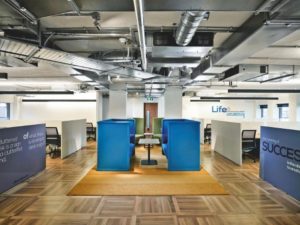
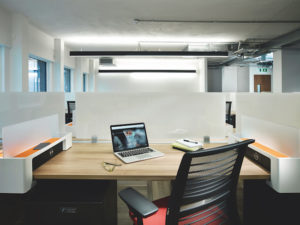
2. Secure workspace buildings
Despite a misguided perception to the contrary, co-working spaces don’t allow just anybody to ‘come-and-go’ as they please. Shared offices often adopt fob-card entry systems, door codes or networked entry key cards. This means that only paying members can gain entrance to the co-working space.
Similarly important is the efforts put in place to protect co-workers’ personal belongings. From dedicated bike storage space to personal lockable cabinets, co-working doesn’t have to mean the hassle of taking everything with you every time you leave the office.
3. Secure internet connection
Privacy and security are no longer essential in just a physical sense, but are also crucial from a digital perspective. Compared to consumer and retail online fraud, which have been declining in recent years, cybercrime against businesses in the UK has grown by a worrying 63% since early 2017.
It is therefore a growing priority for co-working spaces and shared offices to provide their members with secure, fast internet connection. For example, all At Us & Co members have access to our super fast and highly secure WiFi, the cost of which is fully included in the up-front membership fees. We have a 1gb resilient internet line that allows for an average upload/download speed of 70mbs per second, meaning that members can surf with confidence.
4. Private meetings rooms
Privacy in co-working spaces doesn’t end with the work you do while sat at your desk. Many co-working brands offer private bookable meeting rooms, specially designed to keep your discussions among your team only. Sound-proofing panels are often installed on the walls of meeting rooms to stop your conversation spilling out. Similarly, frosted glass doors and windows are a great addition to a private meeting room, preventing anyone from seeing in whilst still allowing for the essential flow of natural light.
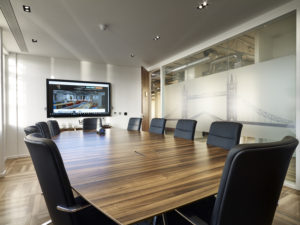
5. Member mindset
Ultimately, co-working spaces attract like-minded members. This is largely due to the nature of co-working, and how its convenience and flexibility appeals to up-and-coming businesses, SMEs and start-ups. The vast majority of co-workers are dedicated to getting on with their own work, respecting those around them and focusing on the task at hand.
Here at Us & Co, we specialise in providing our members with a professional setting in which they can concentrate and thrive. With every new member through our door – from co-working to private office members – we emphasise the importance of considerate working and respect for fellow workers’ space. As a result, we are proud of the mindful environment we maintain.
See for yourself how conducive co-working set-ups are to privacy and productivity, by booking a tour at one of our business centres in London Monument or Dublin St. Stephen’s Green.
